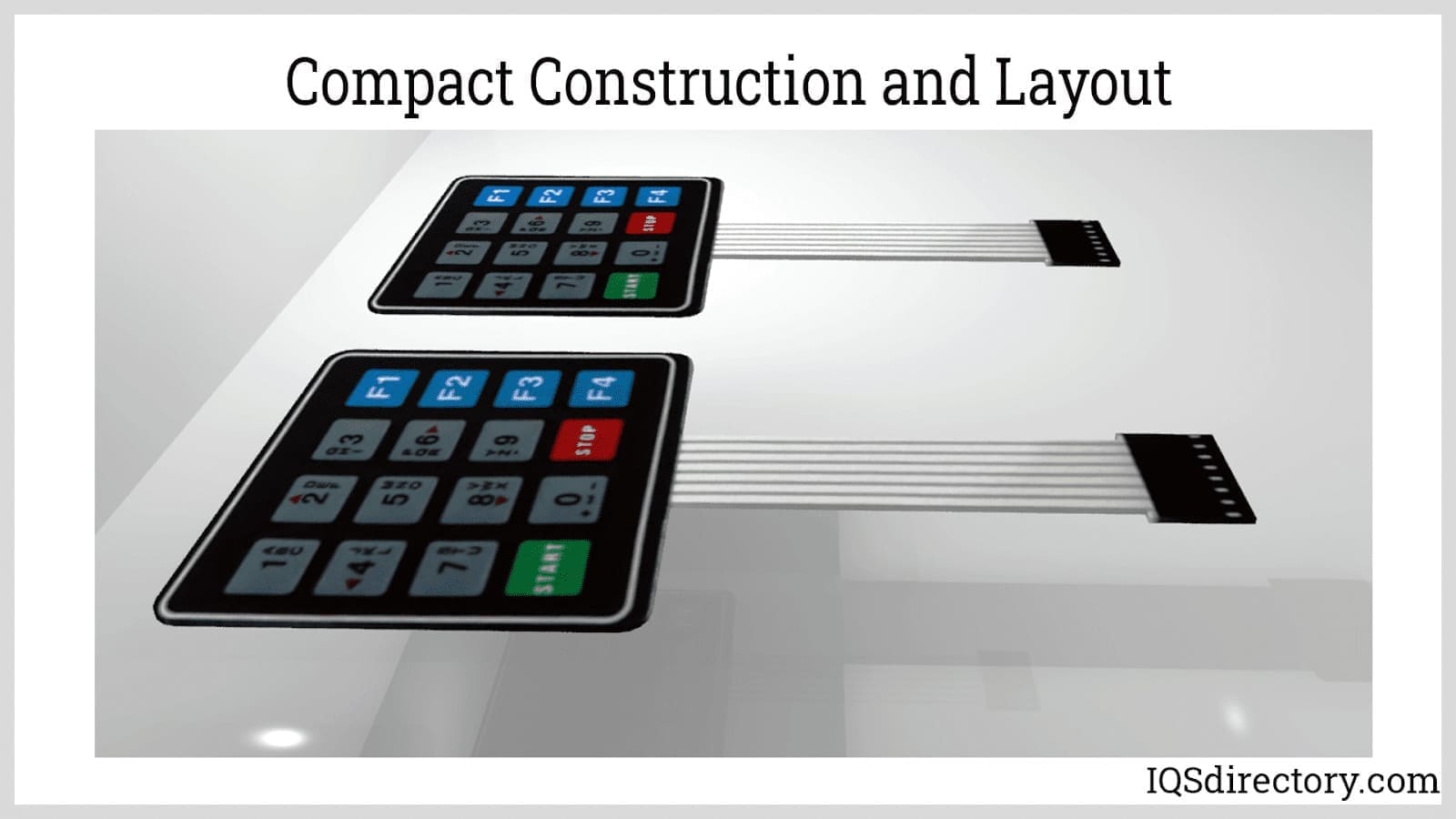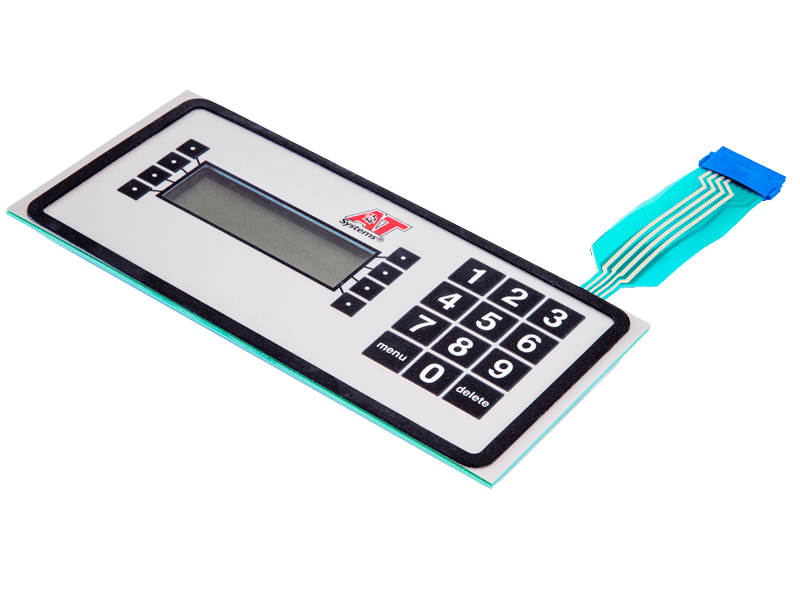The Environmental Benefits of Choosing Membrane Switches for Your Products
The Environmental Benefits of Choosing Membrane Switches for Your Products
Blog Article
Comprehending the Value of Membrane Switches in Interface
Membrane switches are indispensable elements in the layout of effective customer interfaces, promoting not just performance but likewise enhancing visual appeal and customer communication. Their special features, such as resistance to ecological factors and customizable layouts, make them ideal for a diverse selection of applications across numerous industries. As we check out the future fads and different benefits linked with Membrane innovation, it ends up being clear that these switches are greater than simply parts; they stand for a convergence of advancement and usefulness. The effects of this innovation on user experience deserve analyzing better.
What Are Membrane Switches?

The spacer layer, which contains glue properties, allows for the splitting up of the circuit layer from the overlay, making certain that the button stays in a non-activated state until pushed. When pressure is used to the overlay, it presses the spacer layer, bridging the void and finishing the circuit in the underlying layer. This design not just lowers the physical area required for conventional mechanical switches yet additionally improves the resilience of the device, as Membrane switches are usually immune to dust, dampness, and various other environmental variables.
Frequently found in applications varying from consumer electronic devices to clinical devices, Membrane switches are essential to modern innovation, supplying a efficient and straightforward user interface that lines up with modern design requirements.
Benefits of Membrane Buttons
While numerous button modern technologies exist, Membrane Switches offer distinctive advantages that make them particularly desirable in numerous applications. One of the key advantages of Membrane switches is their compact layout, which allows for space-saving executions in tools where realty is limited. Their slim profile not just improves visual charm yet also helps with lightweight building and construction.
One more considerable advantage is their resistance to environmental factors. Membrane buttons are generally secured versus moisture, dirt, and pollutants, making them ideal for usage in requiring atmospheres, such as clinical tools and industrial equipment. This toughness expands the lifespan of the button, reducing maintenance expenses and enhancing dependability.
Moreover, Membrane buttons can be personalized to satisfy details design requirements, integrating one-of-a-kind graphics and colors that enhance user interaction. Their tactile feedback options can also be customized to give a gratifying customer experience. Furthermore, Membrane buttons are cost-efficient, especially in high-volume applications, as they can be created effectively.
Applications in Different Industries

In the consumer electronics market, Membrane buttons prevail in devices such as microwaves, cleaning machines, and push-button controls. Their tactile feedback and aesthetic options boost user experience while offering a smooth, contemporary look. In addition, vehicle manufacturers utilize Membrane buttons in dashboard controls and infotainment systems, where room is limited, and individual engagement is essential.
Moreover, the commercial sector leverages Membrane buttons in control panels for equipment and tools, enabling intuitive procedure in usually rough settings. Their resistance to chemicals and dampness makes certain longevity and integrity in these applications. Overall, the versatility of Membrane Switches contributes substantially to their extensive usage, making them essential in different technical domain names.
Design Factors To Consider for Membrane Buttons

When making Membrane buttons, several essential considerations have to be taken into consideration to ensure optimal performance and customer experience. To start with, the selection of materials is essential; choosing sturdy, premium substratums can improve the switch's durability and resistance to ecological elements such as wetness and temperature variations.
Secondly, the style of the visuals overlay ought to prioritize clarity and ease of usage. Symbols and message must be legible, and the layout ought to promote intuitive interaction (membrane switches). In addition, responsive comments is necessary; incorporating a responsive dome or various other devices can improve the individual experience by offering physical confirmation of activation
One more crucial variable is the button's electric efficiency. Developers should guarantee that the conductive traces are effectively made to reduce resistance and avoid signal disturbance. This includes examining the needed actuation pressure and making sure compatibility with the electronic components they will certainly interface with.

Future Trends in Membrane Technology
As modern technology continues to breakthrough, Membrane buttons are poised to dig this progress significantly, driven by technologies in materials and producing strategies. One emerging pattern is the unification of innovative products, such as adaptable substratums and conductive inks, which improve resilience and lower the overall weight of Membrane buttons. These products not just improve the tactile action but likewise enable for the design of buttons that can stand up to harsher environmental problems.
Furthermore, the integration of touch-sensitive innovations is transforming standard Membrane Switches right into even more interactive user interfaces. Capacitive touch sensors embedded within Membrane button panels can give a more intuitive and responsive user experience, aligning with the growing demand for smooth, contemporary layouts in consumer electronic devices.
Additionally, improvements in printing techniques, such as digital and 3D printing, make it possible for fast prototyping and modification of Membrane buttons. This flexibility enables suppliers to react much more quickly to market demands and customer preferences.
Finally, sustainability is coming to be a this hyperlink substantial focus, with suppliers exploring environment-friendly materials and processes. As these fads unravel, the future of Membrane technology promises boosted performance, aesthetic allure, and ecological obligation, solidifying their role in innovative customer interfaces throughout different industries.
Final Thought
In verdict, Membrane Switches represent an important component in the design go now of user interfaces, integrating functionality with visual flexibility. As improvements in innovation proceed, the development of Membrane buttons is expected to additional refine user interfaces, driving innovation and boosting use in an increasingly complicated technical landscape.
Membrane switches are indispensable elements in the style of effective user interfaces, assisting in not just performance but also boosting visual appeal and customer interaction.Membrane Switches offer as an essential component in different customer interfaces, promoting a seamless interaction between customers and digital gadgets.While numerous button innovations exist, Membrane Switches offer distinct advantages that make them especially preferable in different applications.Moreover, Membrane switches can be personalized to meet particular layout needs, incorporating unique graphics and colors that enhance user interaction.In conclusion, Membrane Switches represent a vital component in the design of user interfaces, integrating capability with visual flexibility.
Report this page